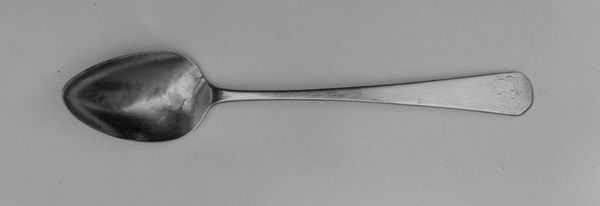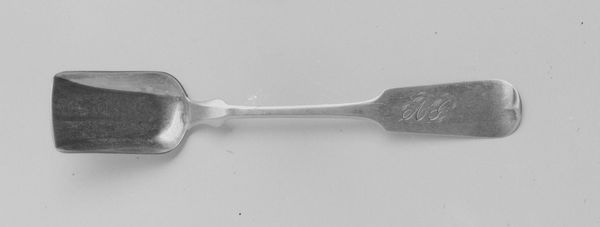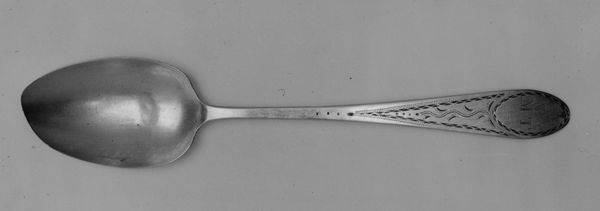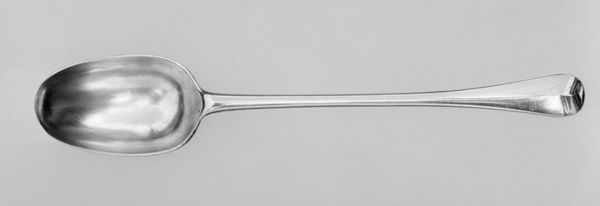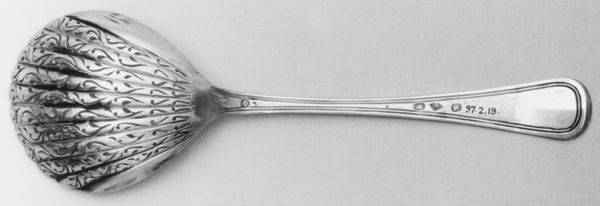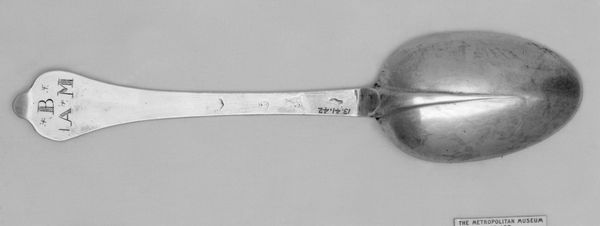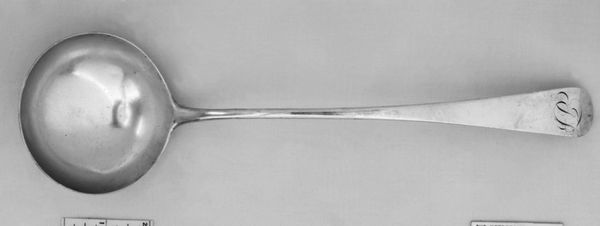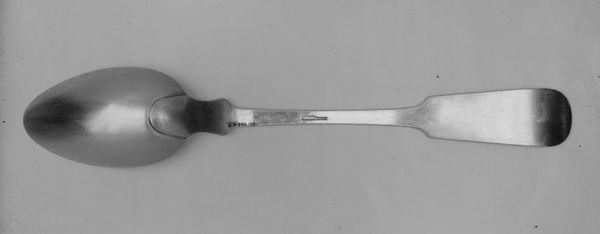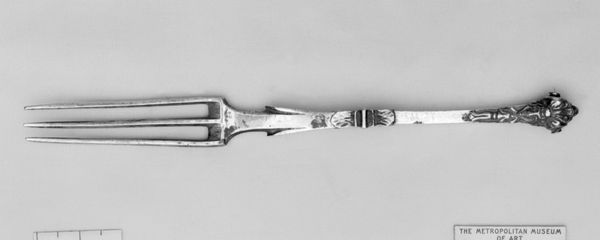
silver, sculpture
#
silver
#
sculpture
#
decorative-art
Dimensions: Length: 9 1/2 in. (24.1 cm)
Copyright: Public Domain
Curator: Looking at this "Marrow spoon," crafted between 1743 and 1744, one might not immediately think of it as a prominent art piece, but context changes everything. Here we have an object forged by Thomas Jackson I, rendered in gleaming silver. Editor: My first thought is, it seems so clinical, doesn't it? Cold to the touch, yet holding such a, shall we say, visceral purpose. It’s utilitarian with an unsettling sleekness. Is this the cutlery of a vampire’s banquet? Curator: Haha! In a way, it does reflect a certain... directness of life from that era. Bone marrow was prized, a true delicacy amongst those who could afford it. The silver, indicative of wealth and status, transformed dining into a performance, a declaration. Consider the artistry needed to coax silver into such a specific, refined form. Editor: The thought of who exactly was digging into bone marrow with this thing adds a layer to it. We often think of elaborate paintings and grand sculptures as symbols of the upper classes, but even the cutlery bespoke an entirely different world for the elites, quite removed from common folk. Do we know if Jackson was renowned for his silverware, or was he working to cater specific tastes? Curator: The spoons themselves can be viewed as commentary of excess but their delicate designs contrast with the blunt purpose they serve. Jackson would have served a wealthy and particular clientele. This object provides insights into the everyday of privileged existence in ways portraits, landscapes, or architectural rendering might often obscure, hinting at the intricate ways society then reinforced disparities. Editor: So much history, etched in elegant, yet slightly morbid, detail. It is quite thought-provoking. Who knew a spoon could unearth such narratives about class and society. It makes you think, doesn’t it? Curator: Indeed. It elevates everyday items to a high art and the spoon makes you reflect, if briefly, on larger narratives about society and privilege across eras.
Comments
No comments
Be the first to comment and join the conversation on the ultimate creative platform.


